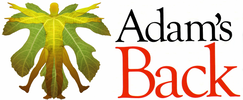|
17/9/2020 0 Comments Your Body's Balancing ActHave you given much thought to your balance? Or do you, like many others, take this ability for granted?That’s understandable – it’s often only when we experience a problem that we give it more thought. Yet, balance is more than simply remaining upright. There are complex processes that allow us to move, turn our heads without our vision blurring, quickly readjust our muscles to support stability and stay vertical.
We all stumble or experience clumsiness on occasion. We may bump into the doorframe or sway when we get up too quickly. But when balance issues become chronic, the symptoms are usually caused by an underlying problem and can be troublesome, incapacitating, and dangerous. Symptoms may include a sensation of spinning or lightheadedness, blurred vision, hearing changes, stumbling, falls, decreased spatial awareness, poor depth perception, and nausea. It may also contribute to fatigue, anxiousness, and confusion. How do we balance? It’s an important question. Just as a car has many components that allow it to safely take a corner at speed, we have many interworking parts that allow us to remain stable. We must sense where we are in space, make constant small adjustments that bring us back to centre, and integrate these functions seamlessly. This begins within the ears. The inner ear has small organs that contain fluid and hair. As you move your head, the fluid shifts, the hair bends, and this information is sent, via nerves, to the brain. Each organ provides feedback on movement in a certain direction: tilting upward or downward, leaning to the left or right, turning sideways, and accelerating. Inner ear infections or ear crystals upset this ability, which is why they can cause dizziness and imbalance. The eyes provide visual input – they send impulses to the brain that provide visual cues identifying your position relative to other objects. To understand this, stand on one leg and bend your other knee. How balanced do you feel? Now, try it with your eyes closed. The difference is marked. The skin, muscles and joints, particularly of the spine, are also involved. As they move, they continuously transmit what is called proprioceptive information regarding their position, relevant to the body parts they connect to. For example, increased pressure is felt in our heels when we lean back. These cues help our brain determine where our body is in space. The remarkable combination of input enables us to sense when we are moving, in which direction, and at what speed. We then respond to that information, often subconsciously. Nerves fire, muscles move us in appropriate ways, and we are, usually, able to right ourselves. The balance system also provides feedback on the success of these manoeuvres, allowing further adjustment. Maintaining optimal balance is important – these activities may help.
If you are experiencing balance problems, ask your Adam's Back chiropractor for advice.
0 Comments
Leave a Reply. |
AuthorAdam's Back is a team of dedicated complimentary health professionals. Our aim is to support you in finding drug-free solutions for better health. Archives
July 2024
Categories |
Search by typing & pressing enter


 RSS Feed
RSS Feed